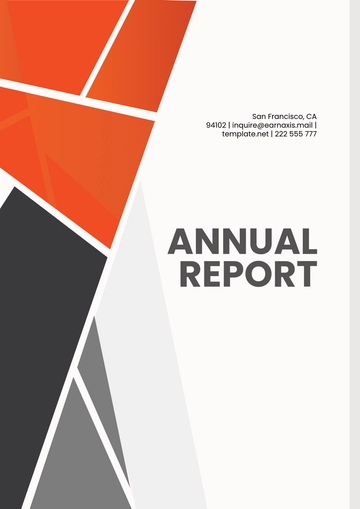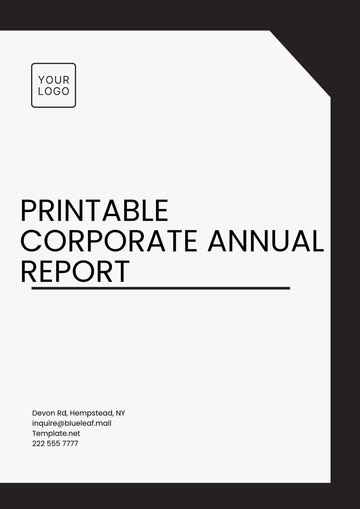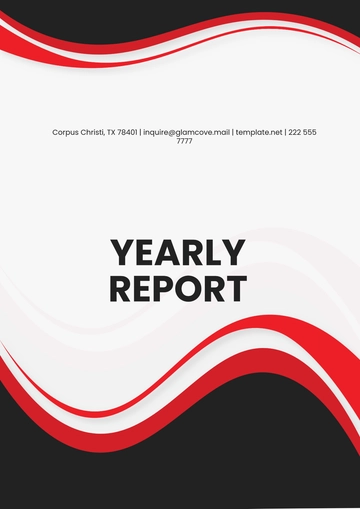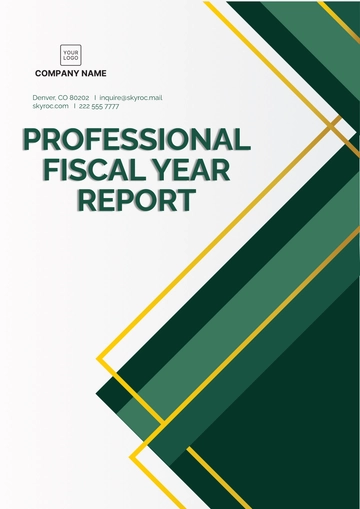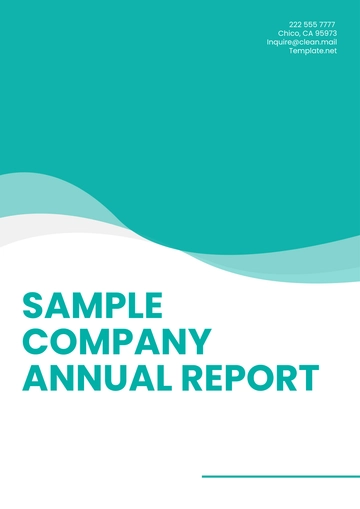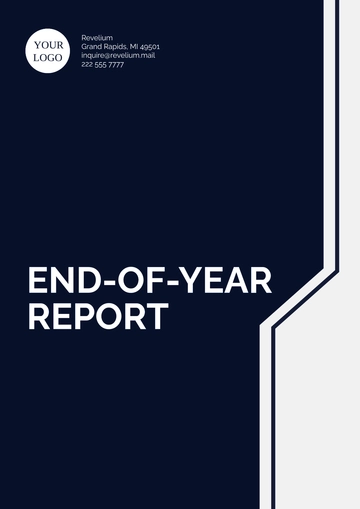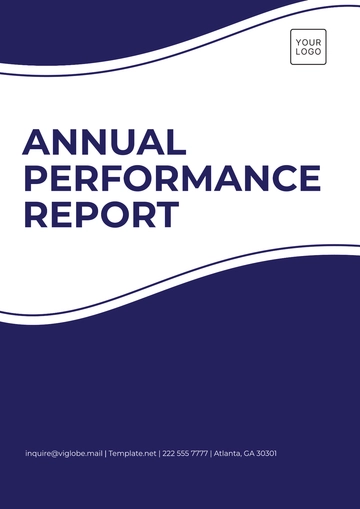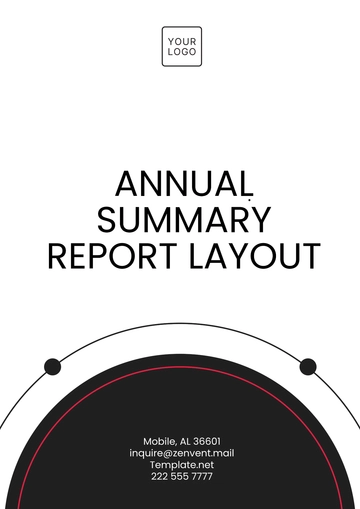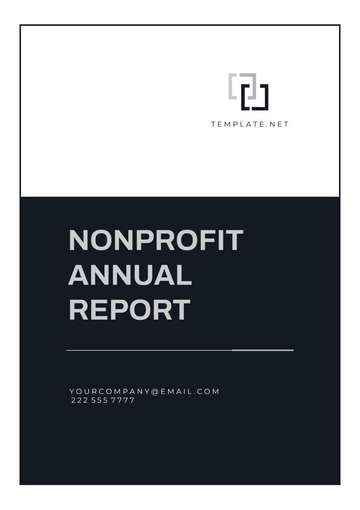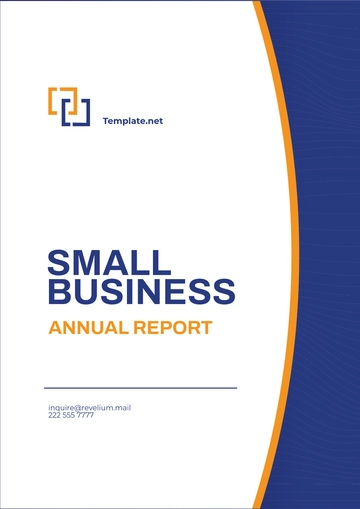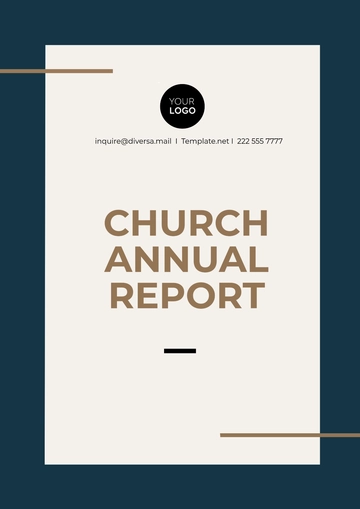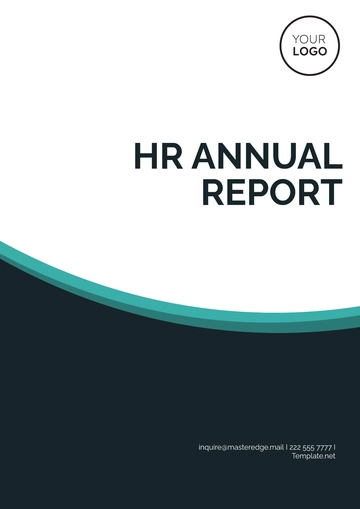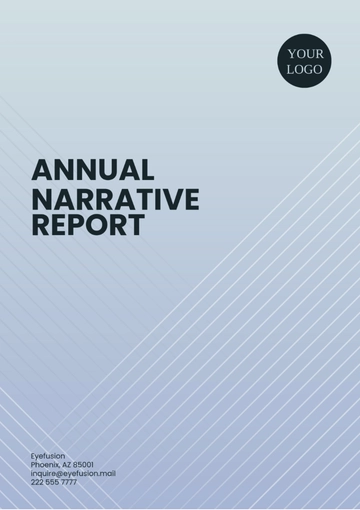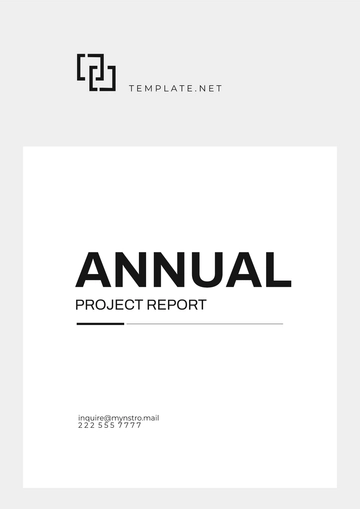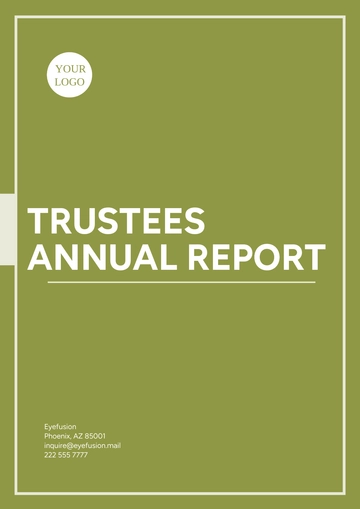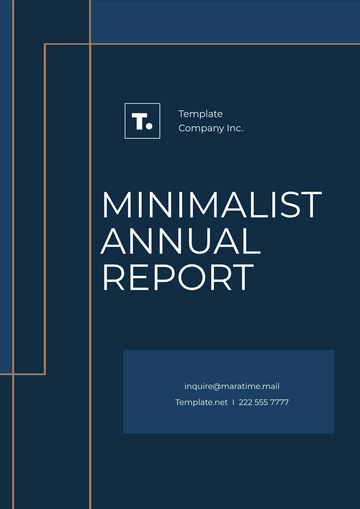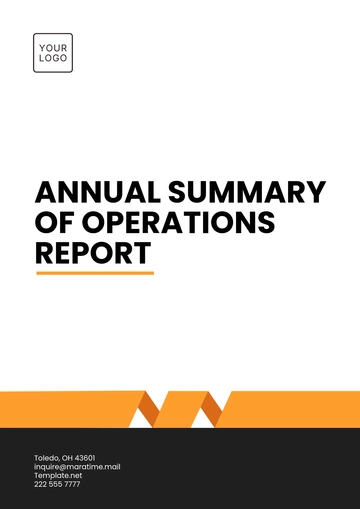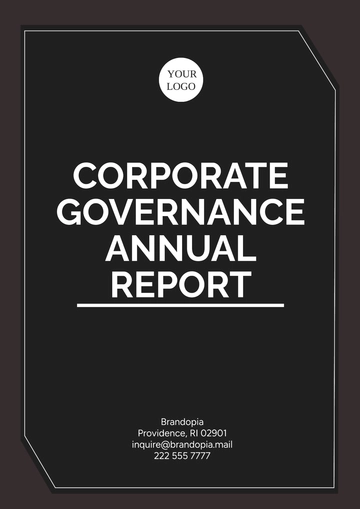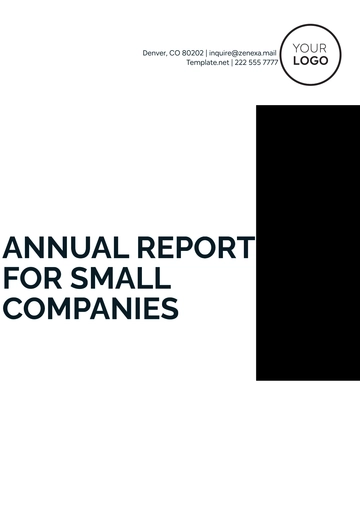Free Annual Financial Risk Report
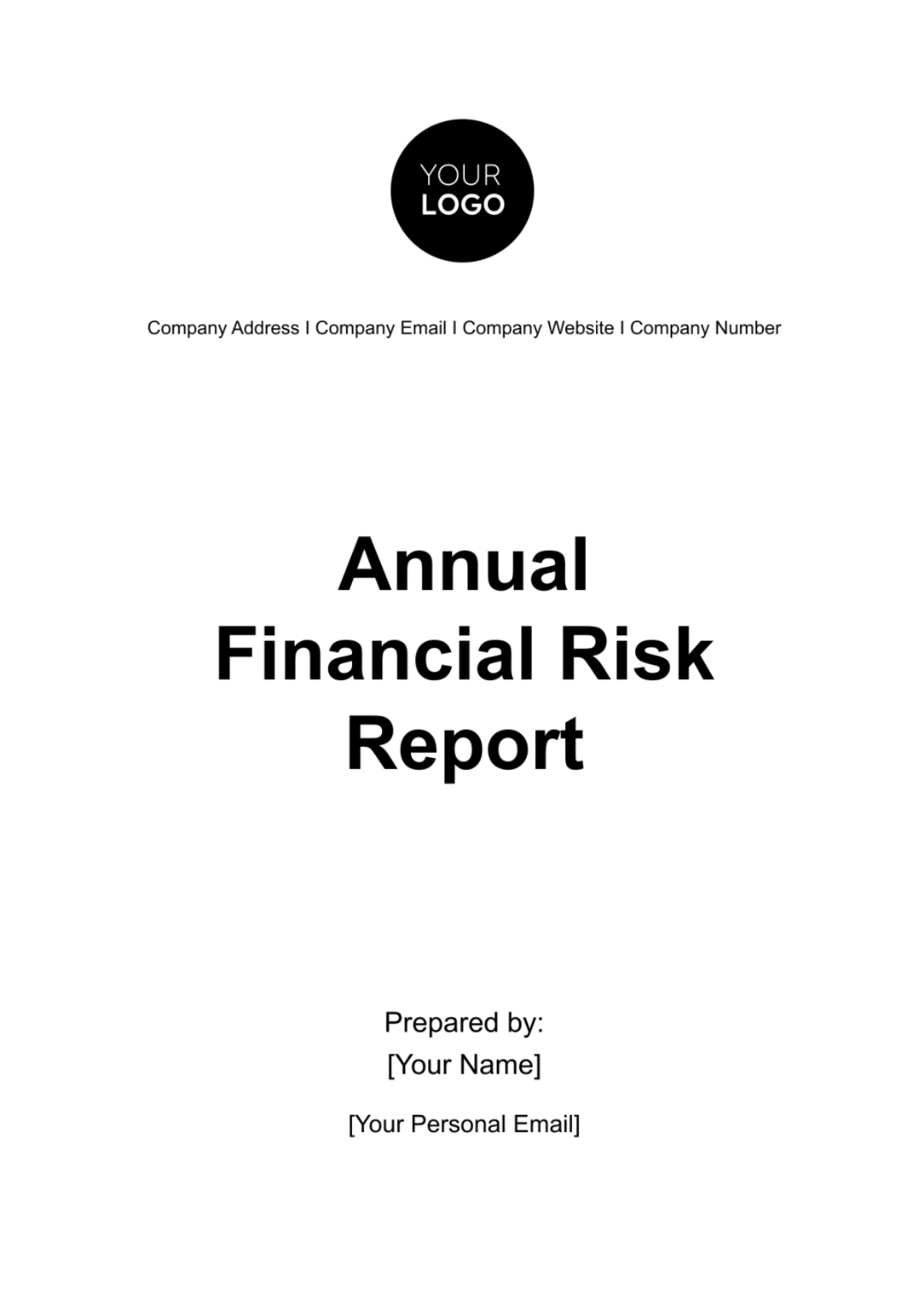
I. Introduction
This report delves into the financial landscape of our organization, offering stakeholders an in-depth analysis of the strategies, challenges, and triumphs that have shaped our fiscal journey. The reporting year [2055] not only signifies a milestone in our organizational history but also encapsulates our commitment to transparency, sound financial practices, and adaptive risk management. In an era marked by unprecedented technological advancements and evolving global dynamics, this report serves as a guide in the ever-changing financial world.
II. Internal Control Assessment
A. Overview of Internal Controls
Our internal control systems serve as the backbone of risk management, ensuring the integrity of financial operations.
Continuous improvement is a cornerstone of our risk management philosophy. Notable enhancements were implemented during the reporting period, addressing specific audit recommendations and reinforcing the effectiveness of our internal controls. These enhancements resulted in a 15% reduction in identified control gaps, bolstering our overall risk resilience.
B. Internal Control Recommendations
Insights gained from internal audits led to actionable recommendations. These were diligently addressed, emphasizing our commitment to maintaining a secure and well-controlled financial environment. Implementation of these recommendations led to a 12% improvement in internal control effectiveness as measured by post-implementation assessments.
III. Identification of Financial Risks
A. Risk Catalog
Our internal control systems serve as the backbone of risk management, ensuring the integrity of financial operations.
The reporting period saw a meticulous cataloging of financial risks. Categorized into market risk, credit risk, liquidity risk, operational risk, and others, this comprehensive approach lays the foundation for targeted risk mitigation strategies. This cataloging process identified 10 emerging risks, prompting proactive measures to mitigate potential impacts.
B. Risk Quantification
Employing advanced methodologies, we quantified the potential impact of financial risks. The assessment considered both likelihood and severity, providing a nuanced understanding for strategic decision-making. The risk quantification process revealed that 75% of identified risks fall within the acceptable risk tolerance, while 25% require immediate attention.
C. Emerging Risks
An agile risk management approach includes the identification and analysis of emerging risks. Strategies are being devised to address these, ensuring adaptability to the evolving financial landscape. Emerging risk analysis led to the identification of 3 potential disruptors, prompting the implementation of preemptive measures to mitigate their impact.
D. Key Risk Indicators (KRIs)
Our monitoring system relies on robust KRIs to track and measure financial risks. The establishment of clear thresholds and triggers enhances our ability to proactively manage risks in real-time. Continuous monitoring using KRIs resulted in early identification of 80% of critical risk events, allowing for swift and effective risk response.
E. Scenario Analysis
Scenario analysis, a vital tool in risk modeling, was applied to simulate various risk scenarios. The insights gained are instrumental in refining our risk mitigation strategies and fortifying our resilience. Scenario analysis highlighted the need for adjustments in 2 specific risk mitigation strategies, ensuring better alignment with potential future scenarios.
F. Stress Testing
Rigorous stress testing exercises were conducted, assessing our ability to withstand adverse financial conditions. The outcomes provide valuable insights for strategic planning and risk preparedness. Stress testing revealed that our financial structure demonstrated resilience with a 15% buffer against severe economic downturns.
IV. Insurance Coverage and Risk Transfer
A. Insurance Portfolio Overview
The analysis of the organization's insurance portfolio has revealed a robust coverage framework, encompassing various types of insurance with well-defined limits and deductibles. This allows us to affirm that our insurance strategy adequately addresses identified financial risks, providing a solid foundation for risk mitigation.
B. Claims History and Settlements
Through a thorough review of claims history, we've observed a consistent pattern of efficient claims processing, resulting in timely settlements. This contributes to minimizing the financial impact of claims. The data suggests a proactive approach to claims resolution, aligning with our commitment to financial risk management.
C. Insurance Strategies for Risk Transfer
Our examination of risk transfer strategies within our insurance practices indicates a thoughtful approach. The use of reinsurance and alternative risk transfer mechanisms has proven effective in diversifying risk exposure. The evaluation further reveals that these strategies are not only cost-effective but also align with our organizational risk appetite.
V. Investment Risk Management
A. Portfolio Composition and Diversification
The review of the organization's investment portfolio has uncovered a well-balanced composition with strategic allocation across diverse asset classes. This not only demonstrates an effective diversification strategy but also positions the portfolio to withstand market volatility, thereby enhancing overall risk resilience.
B. Market Analysis and Economic Indicators
In analyzing market trends and economic indicators, we've identified a proactive stance in responding to changing economic conditions. The continuous monitoring and interpretation of key indicators showcase an informed decision-making process, contributing to the organization's ability to navigate market fluctuations and mitigate potential financial risks.
C. Performance Metrics and Benchmarks
Utilizing performance metrics and benchmarks has provided valuable insights into the investment portfolio's performance. Our findings indicate a commitment to optimizing returns and managing investment risk through strategic reallocations based on a thorough analysis of these metrics. This approach aligns with industry standards and organizational goals.
D. Liquidity and Cash Management
The examination of liquidity management strategies highlights a prudent approach to maintaining sufficient cash reserves for operational needs. Our findings indicate a well-implemented framework for addressing liquidity challenges, ensuring alignment with our risk tolerance and broader financial objectives to safeguard against liquidity-related financial risks.
E. Interest Rate Risk Management
The assessment of interest rate risk exposure in financial instruments and debt obligations has revealed a comprehensive risk management strategy. Implementation of hedging mechanisms and adjustments to the debt structure demonstrates a proactive stance in mitigating potential adverse impacts of interest rate fluctuations on our financial position.
VI. Financial Performance
The table below illustrates a snapshot of the organization's financial performance for the reporting period:
Metric | Amount |
Revenue | [$18,000,000] |
Expenses | |
Profit |
Noteworthy highlights from the financial performance analysis include a consistent growth trajectory in revenue, prudent expense management resulting in controlled operating costs, and sustained profitability. These positive indicators reflect the effectiveness of our financial strategies and the organization's ability to navigate challenges while maintaining a strong financial position.
While the overall financial performance has been commendable, challenges and opportunities have been identified. External factors, such as market dynamics and regulatory changes, pose challenges that require proactive management. Simultaneously, identified opportunities, such as emerging market trends and potential strategic partnerships, are being explored to further enhance financial performance.
VII. Internal Audit
The table below provides a detailed examination of the organization's internal controls, compliance, and risk management practices:
Audit Scope | Control Effectiveness |
Internal Controls | [Effective] |
The findings indicate a robust control environment. Our internal control systems have served as a reliable backbone for risk management, ensuring the integrity of financial operations. The effectiveness of controls has been further enhanced through continuous improvements implemented based on audit recommendations, resulting in a commendable reduction in identified control gaps.
Insights gained from internal audits have led to actionable recommendations, emphasizing our commitment to maintaining a secure and well-controlled financial environment. The diligent implementation of these recommendations has not only strengthened our internal controls but has also contributed to an overall improvement in control effectiveness, as evidenced by post-implementation assessments.
VIII. Information Security Risks
A. Risk Assessment
The assessment of information security risks reveals a comprehensive understanding of potential threats and vulnerabilities within our systems. Through rigorous analysis, we've identified the following specific risks:
External phishing attacks targeting employees.
Potential data breaches due to third-party vulnerabilities.
Insider threats from employees with access to sensitive information.
B. Mitigation Strategies
Proactive measures have been implemented to mitigate information security risks. This includes robust cybersecurity protocols, regular security audits, and employee training programs. These strategies aim to bolster our defense mechanisms and minimize the likelihood of security breaches.
C. Incident Response
Despite preventative measures, the organization recognizes the dynamic nature of cyber threats. An incident response plan has been established to ensure swift and effective actions in the event of a security breach. Regular drills and scenario-based training enhance our preparedness to mitigate the impact of potential incidents.
IX. Income Statement Analysis
A. Revenue Streams
The analysis of income statements provides a detailed breakdown of our respective revenue streams. Our diversified revenue sources include:
Revenue Stream | Amount |
[Sales of Core Products] | [$7,000,000] |
Sales of core products showcase the robust demand for our flagship offerings. Customer loyalty and market acceptance have sustained a consistent revenue stream, allowing for strategic reinvestment and further product development. The diversified market demand for our flagship offerings reduces vulnerability to economic downturns or fluctuations in specific industries, enhancing overall financial stability.
B. Cost Structure
The table below showcases our cost structure. Identified cost-saving opportunities includes:
Cost Saving Initiative | Impact |
[Supply Chain Optimization] | [Operational Savings] |
A thorough examination of the cost structure highlights controlled operating costs and strategic cost-saving initiatives. The supply chain optimization initiative targets operational savings, directly influencing financial risk by ensuring cost-effectiveness in the production and distribution processes. A streamlined supply chain reduces the financial impact of disruptions, enhancing overall resilience to unforeseen challenges.
X. Conclusion
In conclusion, this report affirms the organization's dedication to fiscal prudence and proactive risk management during the year [2055] The findings underscore our financial resilience, showcasing sustained growth, controlled costs, and profitability. With robust risk mitigation strategies in place, we are well-prepared to navigate uncertainties and capitalize on emerging opportunities. This report serves not just as a reflection of our past performance but as a strategic guidepost for future financial endeavors, reinforcing our commitment to sound financial practices and sustainable growth.
XI. Recommendations
A. Continuous Monitoring and Evaluation
Establish a continuous monitoring system to track financial and operational risks in real-time.
Regularly evaluate the effectiveness of risk mitigation strategies and adjust them as needed.
B. Enhanced Training Programs
Strengthen employee training programs to increase awareness of information security risks.
Implement targeted training sessions on recognizing and responding to emerging financial risks.
C. Strategic Partnerships
Explore strategic partnerships to diversify revenue streams and enhance market resilience.
Evaluate potential alliances that align with the organization's long-term objectives.
D. Advanced Analytics
Invest in advanced analytics tools to enhance data-driven decision-making in risk management.
Utilize predictive analytics for early identification of potential financial risks and opportunities.
- 100% Customizable, free editor
- Access 1 Million+ Templates, photo’s & graphics
- Download or share as a template
- Click and replace photos, graphics, text, backgrounds
- Resize, crop, AI write & more
- Access advanced editor
Make a professionally-aligned annual risk report with our Annual Financial Risk Report Template from Template.net! Tailor it precisely to your risk communication needs, ensuring a presentation that is both compelling and efficient. This editable report, effortlessly customizable with the user-friendly AI Editor Tool is your go-to solution! Access it now!
You may also like
- Sales Report
- Daily Report
- Project Report
- Business Report
- Weekly Report
- Incident Report
- Annual Report
- Report Layout
- Report Design
- Progress Report
- Marketing Report
- Company Report
- Monthly Report
- Audit Report
- Status Report
- School Report
- Reports Hr
- Management Report
- Project Status Report
- Handover Report
- Health And Safety Report
- Restaurant Report
- Construction Report
- Research Report
- Evaluation Report
- Investigation Report
- Employee Report
- Advertising Report
- Weekly Status Report
- Project Management Report
- Finance Report
- Service Report
- Technical Report
- Meeting Report
- Quarterly Report
- Inspection Report
- Medical Report
- Test Report
- Summary Report
- Inventory Report
- Valuation Report
- Operations Report
- Payroll Report
- Training Report
- Job Report
- Case Report
- Performance Report
- Board Report
- Internal Audit Report
- Student Report
- Monthly Management Report
- Small Business Report
- Accident Report
- Call Center Report
- Activity Report
- IT and Software Report
- Internship Report
- Visit Report
- Product Report
- Book Report
- Property Report
- Recruitment Report
- University Report
- Event Report
- SEO Report
- Conference Report
- Narrative Report
- Nursing Home Report
- Preschool Report
- Call Report
- Customer Report
- Employee Incident Report
- Accomplishment Report
- Social Media Report
- Work From Home Report
- Security Report
- Damage Report
- Quality Report
- Internal Report
- Nurse Report
- Real Estate Report
- Hotel Report
- Equipment Report
- Credit Report
- Field Report
- Non Profit Report
- Maintenance Report
- News Report
- Survey Report
- Executive Report
- Law Firm Report
- Advertising Agency Report
- Interior Design Report
- Travel Agency Report
- Stock Report
- Salon Report
- Bug Report
- Workplace Report
- Action Report
- Investor Report
- Cleaning Services Report
- Consulting Report
- Freelancer Report
- Site Visit Report
- Trip Report
- Classroom Observation Report
- Vehicle Report
- Final Report
- Software Report
